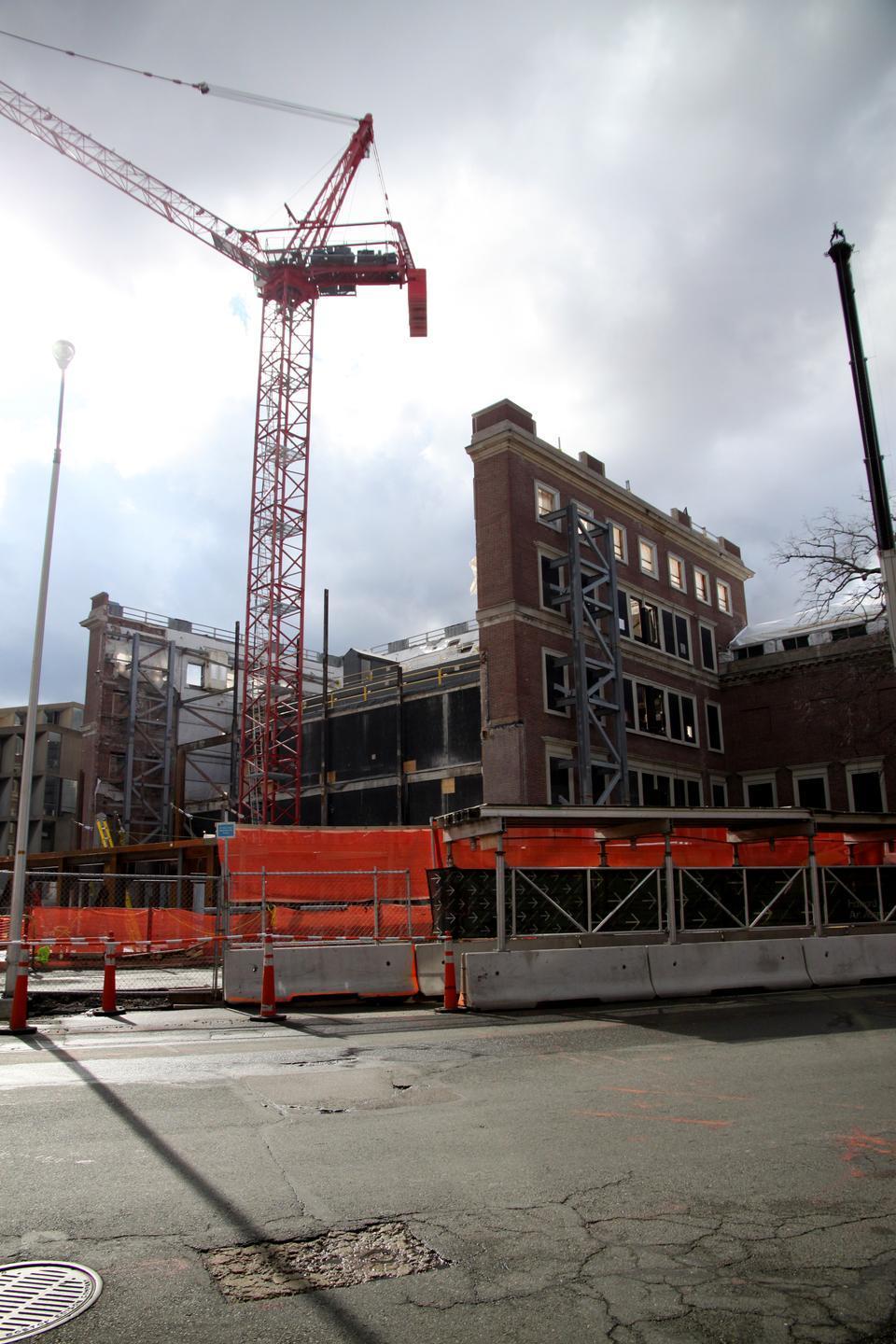
Lifting the Fogg
Twenty steps from Lamont stands the home of the sixth largest art collection in the United States. Since 2008, The Harvard Art Museums have been undergoing renovations, and the Fogg—the most expansive of the museums—has been off-limits to visitors. For some Harvard students, the construction on Quincy Street is just an incovenience. For others, it represents a missed opportunity.
“As a prefrosh, I got a glimpse [of the museum] for a half hour and they seemed pretty amazing,” says Shannon E. Mulshine ’12, a History of Art and Architecture concentrator. Mulshine, the former vice president of Harvard Art Museums’ Undergraduate Connection, has witnessed the construction unfold over her four years at Harvard. Though she has enjoyed access to the Arthur M. Sackler Museum, as well as the museums’ storage facility in Sommerville, the main building at 32 Quincy Street has been a mere construction site.
“There have been times when I’ve been looking at the construction and the building which is a hollow shell and [have felt] cheated,” Mulshine says.
A LONG TIME COMING
The Harvard Art Museums began planning an extreme redesign and renovation project almost 10 years ago, according to Daron J. Manoogian, Directorof Communications for the Harvard Art Museums.“When [Director Thomas W. Lentz] came to the museums [in 2003] there had already been a lot of discussion about renovating the building, and there had been some architectural planning although nothing was approved.”
The original intent of the project, as well as its current driving principle, has been to make the museums serve an educational role. “[Lentz] wanted to make sure that this wasn’t simply an architectural project,” says Manoogian, but that it also “furthered our academic goals as a teaching institution.”
Former president of HAMUC, Shannon M. Morrow ’12, is particularly excited about the incorporation of study spaces within the new building. “I think that the additional classroom space that they have planned will make the Fogg a much more accessible museum for the student population of the university, and will hopefully make students curious to see the galleries as they come in for classes,” she explains in an email.
Deborah M. Kao, Acting Head of the Division of Modern and Contemporary Art and Chief Curator for the Museums, notes that gallery space will increase by almost 40 percent.
The primary architect of the renovations is Renzo Piano, who was also responsible for the design of such buildings as the Pompidou Center and The New York Times Building. Peter J. Atkinson, Director of Facilities and Planning Management for the Harvard Art Museums, says that Piano and his team—known collectively as the Renzo Piano Building Workshop—are “a class act. They dedicate a full studio to each project.” Piano, now 74, travels from Italy to check on the project several times each year.
LIMITED OPTIONS
Architecturally speaking, this job is not an easy one. Rather than tearing down the buildings completely and starting from scratch, the architects will preserve the façade and interior plan even as they add new study spaces and galleries. “It involves not only new construction but lots of restoration work on a 1927 building that had never before undergone substantial renovation,” says Manoogian. “A lot of people ask why it’s taking so long, and that’s the primary reason.”
With the project slated for completion in the fall of 2013, the Sackler Museum remains the Harvard Art Museums’ primary location in Cambridge. The Sackler has remained open throughout the renovations of the Quincy Street buildings, and displays highlights of the collection. Remaining pieces are stored in warehouses in Somerville, which are open to students and accessible by shuttle.
For Mulshine, the inaccessibility of much of Harvard’s expansive permanent collection has left a gaping hole in her experience as a student at Harvard. However, she also believes that most Harvard students who have been here throughout the years-long renovation process barely know about the Harvard Art Museums at all.
Having only one art museum open to the public on Harvard’s campus substantially limits the visibility of the visual arts. “When Harvard students think about where they should bring their family and friends, I doubt it’s the Sackler Museum right now,” Mulshine says. “I hope in the future that it will be the Fogg museum.”
Nonetheless, the Sackler has far more to offer than many realize. “I can’t tell you how amazed people are,” says Danielle J. Parga ’12, former vice president of HAMUC. Parga has helped to organize several of HAMUC’s “Night at the Museum” events, which are designed to introduce the Harvard Art Museums’ collection to undergraduates.
“Students shouldn’t let the closing of the Fogg be an excuse to not see the museums on campus,” says Morrow, who urges undergraduates to explore the multitude of other on-campus museums Harvard has to offer. When the Fogg renovation is complete, she, for one, is sure she’ll be back to visit.


